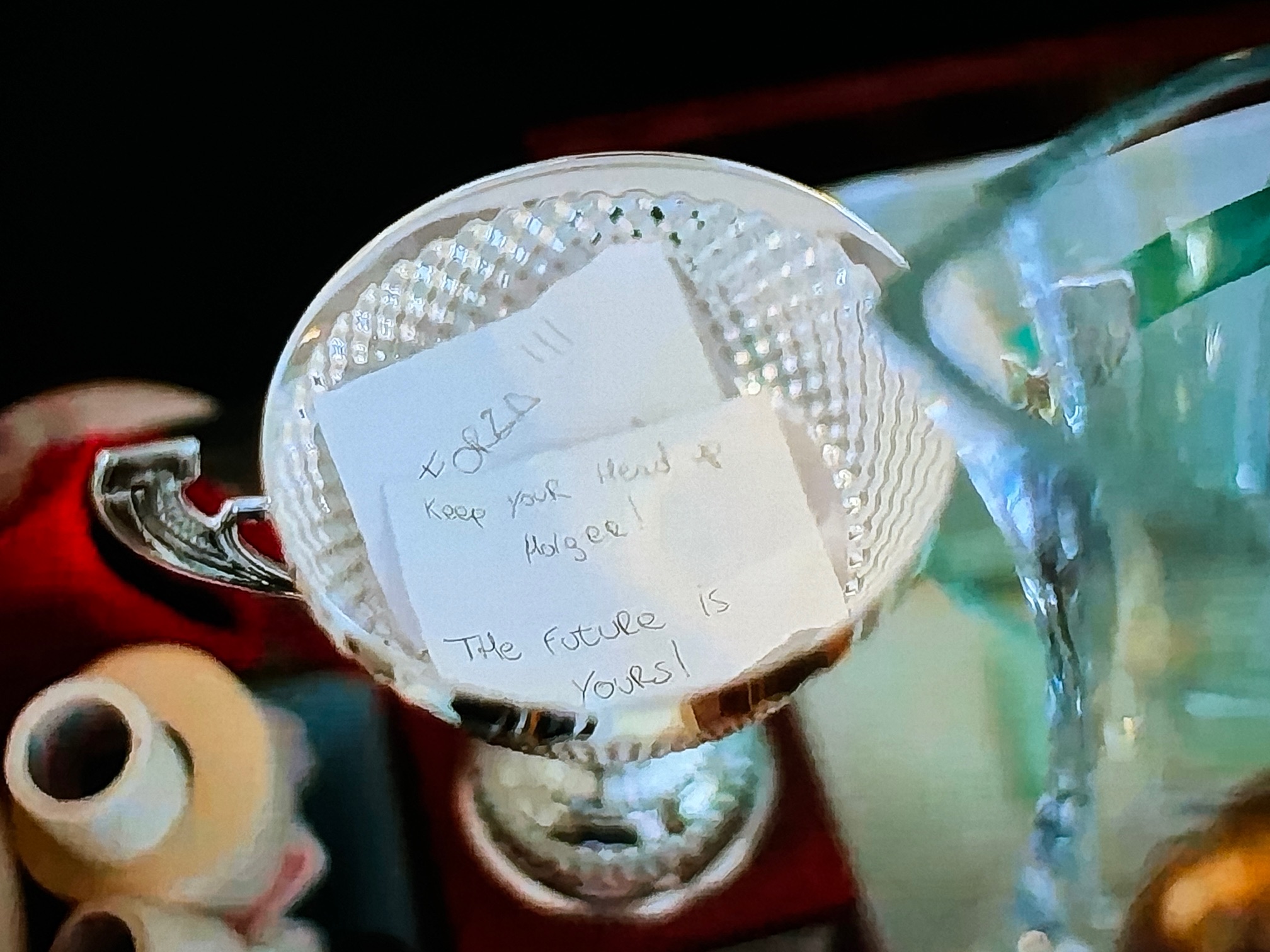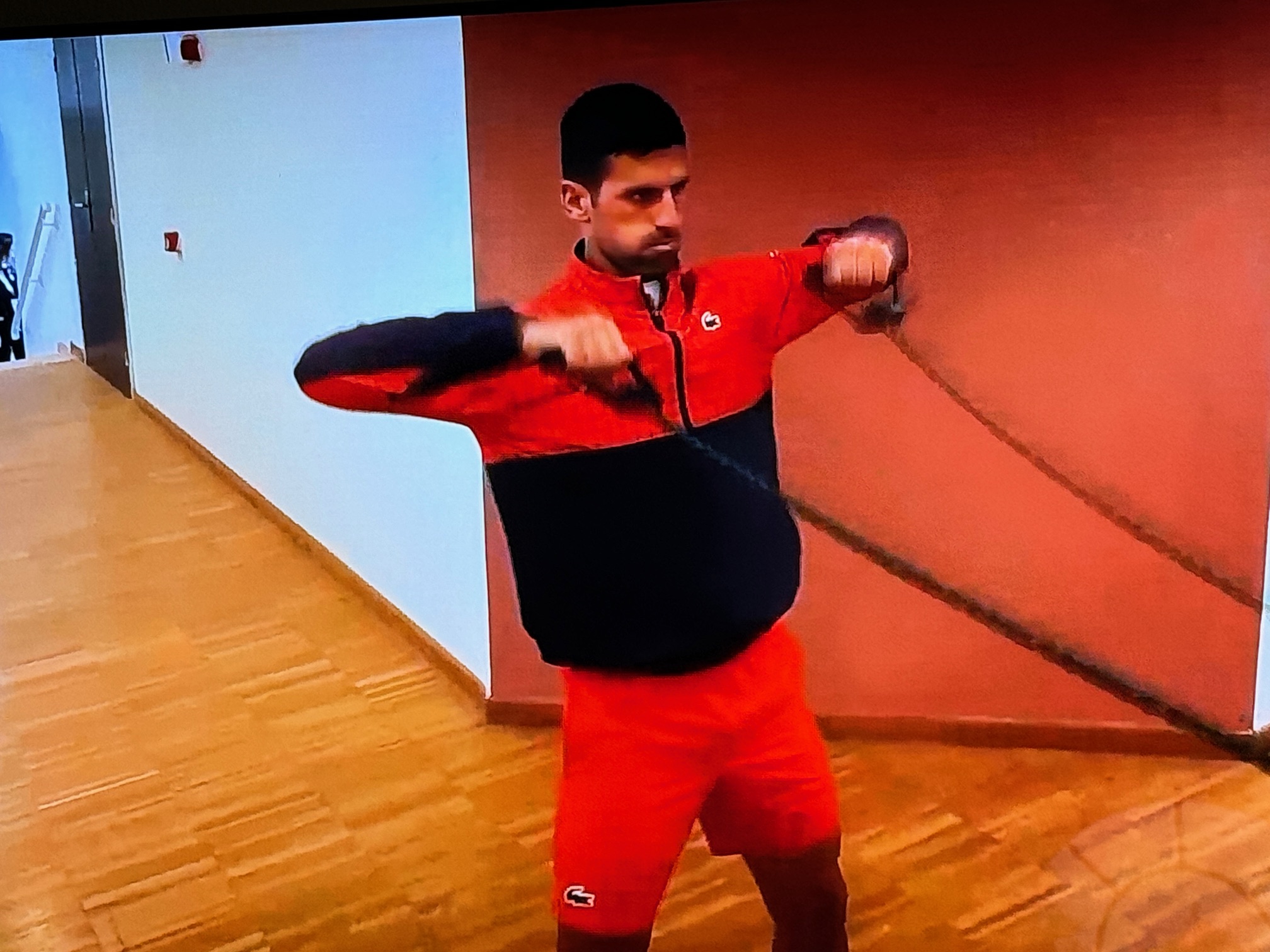Tennis Technology and Training
One of my favorite tennis practice games is a drill I call T and Biscuits. It is an effective way to practice points that wind up in a wild scramble. The player on the receiving side of the net trains opportunities to stabilize a point from a defensive position. The person that feeds the first ball in this drill practices the art of maintaining a competitive edge once it is gained in a point. T and Biscuits is a drill that can be done with two players, which is how I normally play it. However, it is also great for group settings.

To start the drill in the two person variation, Player 1 feeds the ball from just behind the baseline in the center of the court. The starting position for Player 2 is mid-court on the singles sideline where it intersects the service line. Player 2 cannot leave that position until the Player 1 contacts the ball on the feed. Additionally, Player 2 must allow the served ball to bounce. The name of the drill is derived from the initial player positions as well as the way the ball is delivered. “T” is a description of the starting point both players and describes the location of the delivered first shot which is “down the T.”
The “Biscuit” nomenclature describes how the feed is delivered. It is a semi-cooperative shot that is places the receiving player into a playable but defensive position. Consequently, the “Biscuit” should have a little loft and bounce near the half way point between the service line and the baseline. Since the receiver has to allow the ball to bounce, that player usually starts the point receiving a ball that places them in an off-balance position with momentum that carries them well beyond the baseline. The point is played out conventionally from there.
For the feeding player, the idea is to keep their opponent on the defensive until the point is won. The objective for the receiving player is to find a way to equalize the point and then look for an opportunity to tilt the advantage into their own direction. Both of those skills are essential for competitive match play.
When I play this drill in 2 player training sessions, we usually have one player feed all the “Biscuits.” Additionally, the receiver rotates the starting position between both sides of the court so that both forehands and backhands are exercised on that first defensive shot. First player to 11 is a reasonable duration to play this drill.
In my junior days, we would sometimes play a variation of “T and Biscuits” in a group “King of the Court” format. In that variation, the “Biscuit” would be delivered by a coach to players lined up at one of the starting positions. They compete against one “King” on the opposite end. It works well as a one point knock-out format, which creates pressure on the “advantaged” King. It also creates a lot of running back and forth between the ends of the court. I don’t know why, but that seems to be a universally desirable attribute for junior group drills.
Tennis matches are typically won or lost on the basis of a handful of points. Some players seem to regard scrambling points the same way they regard net cord winners. In other words, as an element of random luck with nothing a player can do about it. I disagree with that perspective. The ability to play those unhinged points from either side of the net can can be trained and improved. “T and Biscuits” is a great drill to prepare for those situations.



